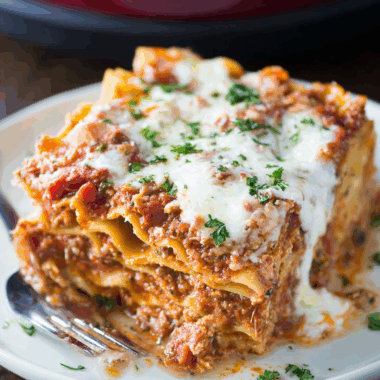These Lemon Curd Tarts are a delightful balance of sweet and tangy, wrapped up in a buttery pastry shell. Each bite offers a bright pop of citrus that instantly lifts the mood, making them a perfect treat for any occasion.
Not only are these tarts incredibly delicious, but they’re also elegant and versatile. Serve them at afternoon tea, bring them to a party, or simply enjoy them with a cup of coffee. Their vibrant lemon flavor pairs beautifully with the delicate sweetness of the pastry, creating a treat that feels light yet indulgent.
Full Recipe:
-
1 cup butter, softened
-
2/3 cup white sugar
-
1 large egg
-
2 ½ cups all-purpose flour
-
1 ½ cups lemon curd (homemade or store-bought)
-
1 tablespoon powdered sugar for dusting
Directions:
-
Preheat oven to 350°F (175°C). Grease a mini muffin tin.
-
In a mixing bowl, cream together the butter and sugar until light and fluffy.
-
Beat in the egg, then gradually mix in the flour until a soft dough forms.
-
Roll dough into 1-inch balls and press each ball into the prepared muffin tin to create a tart shell.
-
Bake the shells for 15 minutes, or until lightly golden. Remove and let cool completely.
-
Spoon about 1 tablespoon of lemon curd into each tart shell.
-
Dust lightly with powdered sugar before serving.
Prep Time: 20 minutes | Cooking Time: 15 minutes | Total Time: 35 minutes
Kcal: 210 kcal | Servings: 24 mini tarts
A Burst of Sunshine in Every Bite
Lemon curd tarts are one of those desserts that immediately bring joy to the table. Their delicate balance of sweet, tangy, and buttery flavors makes them an irresistible treat. The rich, velvety lemon curd filling contrasts beautifully with the crisp pastry shell, resulting in a bite-sized indulgence that is both refreshing and satisfying. While chocolate desserts often dominate the spotlight, citrus-based treats like these offer a brightness that feels lighter and more uplifting.
The Origins of Lemon Curd
Lemon curd itself has a fascinating history. Originating in England during the 19th century, lemon curd was traditionally served with scones and bread as an alternative to jam. Early recipes were far less refined than what we know today, often involving curdling cream with lemon juice. Over time, the preparation evolved into the silky-smooth custard-like spread we now adore. Its natural tang from fresh lemons paired with sugar and butter created the perfect filling or spread. From there, bakers began experimenting with different uses, and tarts became a natural fit.
Why Lemon Curd Tarts Stand Out
What makes lemon curd tarts so special is their versatility and elegance. They can be made into miniature bite-sized treats for parties or larger tart shells for a show-stopping dessert centerpiece. Unlike heavy cream-based desserts, lemon curd tarts feel light on the palate, making them an excellent option after a hearty meal. The zing of lemon enlivens the taste buds, while the buttery pastry shell adds a satisfying crunch. Together, they form a harmonious balance of textures and flavors that few desserts can rival.
Tips for Making Perfect Lemon Curd Tarts
Achieving bakery-quality lemon curd tarts at home requires a few tricks. First, the pastry should always be chilled before baking, ensuring it maintains its shape and crispness. Overworking the dough can lead to toughness, so it’s best to handle it lightly. The lemon curd should be smooth and glossy, achieved by careful whisking and gentle cooking to prevent curdling. Finally, presentation matters: a dusting of powdered sugar, a dollop of whipped cream, or even a garnish of fresh berries elevates the tarts from simple to elegant.
Variations to Try
One of the most appealing aspects of lemon curd tarts is how adaptable they are. For a twist, you can mix lemon curd with other citrus curds like lime, orange, or grapefruit to create a medley of flavors. For a richer dessert, top the tarts with a thin layer of meringue, giving them a lemon meringue pie feel in miniature form. A berry compote, whether blueberry or raspberry, also pairs beautifully with lemon curd, adding both sweetness and a stunning pop of color. For special occasions, consider adding a touch of lavender or basil for a sophisticated herbal note.
Pairing with Beverages
Lemon curd tarts pair wonderfully with a variety of drinks. A classic afternoon tea with Earl Grey or chamomile makes a comforting combination. Coffee lovers will appreciate the way the tartness of lemon complements the bitterness of espresso. For something more indulgent, pair these tarts with a sparkling wine like prosecco or champagne—the bubbles highlight the citrusy freshness while cutting through the richness of the pastry.
Occasions for Serving
These tarts shine at all kinds of events. Miniature versions are perfect for bridal showers, birthdays, or elegant afternoon teas. Larger versions can serve as the centerpiece for holiday tables or celebratory gatherings. Because of their bright flavor, they are particularly fitting for spring and summer occasions when lighter, citrus-based desserts feel refreshing. That said, their golden color and festive charm also make them a delightful winter treat during the holiday season.
Storage and Make-Ahead Tips
Lemon curd tarts can be stored in the refrigerator for up to three days, though it’s best to fill the shells close to serving time to keep them crisp. The lemon curd itself can be made ahead of time and stored in an airtight container for up to a week. For longer storage, it freezes well—just thaw overnight in the refrigerator before use. The pastry shells can also be baked and kept in a sealed container at room temperature for two to three days. This makes them an excellent choice for entertaining since much of the work can be done in advance.
Why Citrus Desserts Are So Popular
Part of the enduring popularity of lemon curd tarts lies in the psychology of flavor. Citrus naturally stimulates the palate, creating a sense of freshness and lightness that balances sweetness beautifully. In many cultures, lemon-based desserts are seen as cleansing and refreshing, making them ideal for rounding off a rich meal. Additionally, the visual appeal of a golden-yellow curd against a delicate pastry shell enhances the overall dining experience, adding vibrancy to any dessert spread.
Healthier Twists
For those seeking a lighter version, there are easy ways to adjust lemon curd tarts without compromising flavor. Using whole wheat flour or almond flour for the crust provides a nutty undertone while adding extra fiber. The sugar in the curd can be slightly reduced or swapped with honey for a more natural sweetness. Coconut oil can replace some or all of the butter for a different richness. Although these changes alter the texture slightly, they maintain the beloved citrus zing while catering to different dietary preferences.
The Beauty of Simplicity
One of the main reasons lemon curd tarts continue to delight is their simplicity. Unlike multi-layered cakes or elaborate pastries, these tarts require only a few key elements: a crisp shell, a luscious filling, and a touch of garnish. Yet, the result is sophisticated enough to impress guests and comforting enough to enjoy casually. This balance of effort and elegance makes lemon curd tarts a timeless dessert choice for both novice bakers and experienced cooks.
Conclusion
Lemon curd tarts are more than just a dessert—they are an experience of freshness, elegance, and comfort rolled into one. From their English origins to their modern-day popularity, these citrusy delights have stood the test of time. Whether enjoyed as bite-sized treats at a tea party or as a larger tart for a family gathering, they always deliver a perfect balance of sweet and tangy satisfaction. With their versatility, ease of preparation, and timeless appeal, lemon curd tarts deserve a permanent place in any baker’s repertoire. For anyone looking to bring a little sunshine to the table, these golden gems are the perfect choice.








